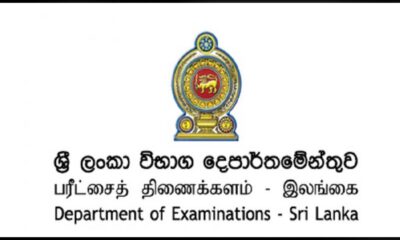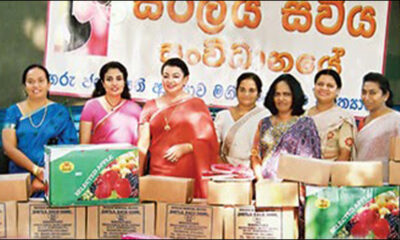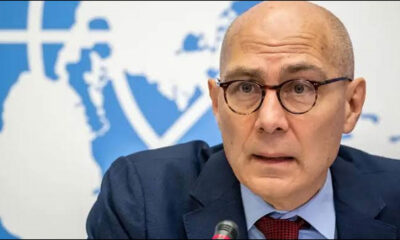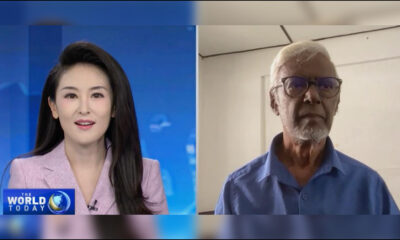FEATURES
How Japan’s youngest CEO transformed Hello Kitty
Published
8 months agoon
By
editor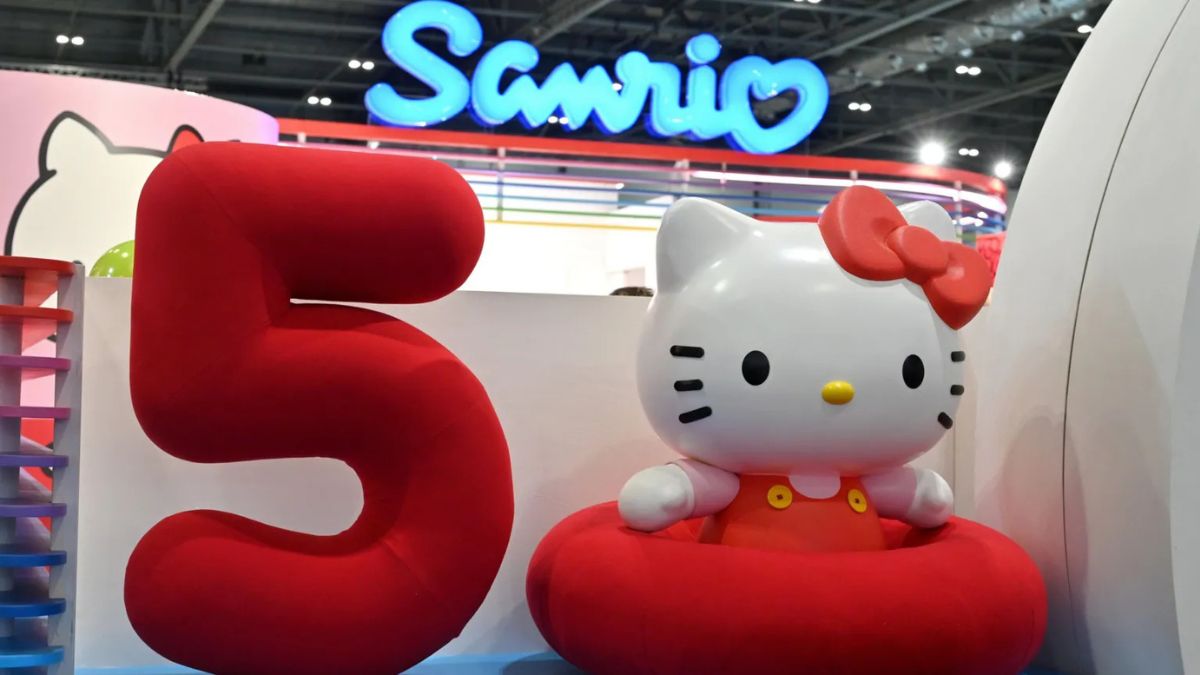
Hello Kitty, arguably Japan’s best loved creation, is celebrating her 50th anniversary.
But all has not always been well at Sanrio, the Japanese company behind the character. The business has been on a spectacular journey of financial peaks and valleys.
Hello Kitty has been ranked the second-highest grossing media franchise in the world behind Pokémon, and ahead of the likes of Mickey Mouse and Star Wars.
Underscoring her global fame, Britain’s King Charles wished her a happy birthday during the state visit to the UK by Japan’s Emperor and Empress in June.
In recent years though Sanrio had been struggling to make money, as interest in Hello Kitty waned.
Two previous surges in Sanrio sales, in 1999 and 2014, were both driven by the character’s popularity. But these jumps in demand for the firm’s products were not sustainable, says Yasuki Yoshioka of investment company SMBC Nikko.
“In the past, its performance had many ups and downs, as if it was on a rollercoaster ride,” Mr Yoshioka says.

Tomokuni Tsuji took over the top job at Sanrio four years ago
Then, in 2020, Tomokuni Tsuji inherited the role as Sanrio’s boss.
He is the grandson of the firm’s founder, Shintaro Tsuji, and was just 31 at the time, making him the youngest chief executive of a listed Japanese company.
His grandfather then became Sanrio’s chairman.
Under the younger Mr Tsuji’s leadership, Sanrio changed its marketing strategy of its stable of other characters.
“It is not about lowering Hello Kitty’s popularity but it is about boosting others’ recognition,” he says.
This resulted in Hello Kitty losing the position of Sanrio’s most popular character.
According to a poll of customers, that spot is now held by Cinnamoroll – a blue-eyed white puppy with pink cheeks, long ears and a tail that looks like a Cinnamon roll.
Sanrio is also no longer just about cute characters.
If Hello Kitty is Japan’s ambassador of cute, then angry red panda Aggressive Retsuko – or Aggretsuko – channels the frustrations of an ordinary working woman.
The character, which is popular among Gen Zers, first appeared in a cartoon series on Japan’s TBS Television before it became a global hit on Netflix.
Another unconventional character is Gudetama, or “lazy egg”, who is living with depression and fires out cold one-liners that reflect dark realities of life.

Sanrio is also no longer just about cute characters
As well as diversifying its characters, Sanrio boosted its overseas marketing and is now tackling counterfeits more rigorously.
“We are now using artificial intelligence to detect fake products and to make removal requests,” says Mr Tsuji.
For its marketing strategy, collaborations with major brands – including Starbucks, Crocs and the LA Dodgers baseball team – have been key, he added.
“In addition to our own promotion, by collaborating with global brands, we are trying to have our characters in the market throughout the year without many breaks.”

Hello Kitty collaborated with the LA Dodgers, home to Japanese baseball sensation Shohei Ohtani
In a society that puts so much emphasis on seniority, Mr Tsuji’s surname was crucial to his ability to make major changes at Sanrio.
Almost a quarter of listed companies in Japan, like car makers Toyota and Suzuki and camera firm Canon, are managed by members of the family that founded them.
The reason is cultural, according to Professor Hokuto Dazai of Nagoya University of Commerce and Business.
In Japan, home to the world’s oldest continuous monarchy, “there is strong recognition of families and family businesses,” he says.
The master-servant relationship from the samurai period has transitioned into the relationship between founding families and their employees, and “historically commoners never fought over the top job”.
“It is also because Japan has a smaller pool of professional executives to choose from,” says Professor Dazai.
“Firms tend to look for their next boss internally, including founding family members.”
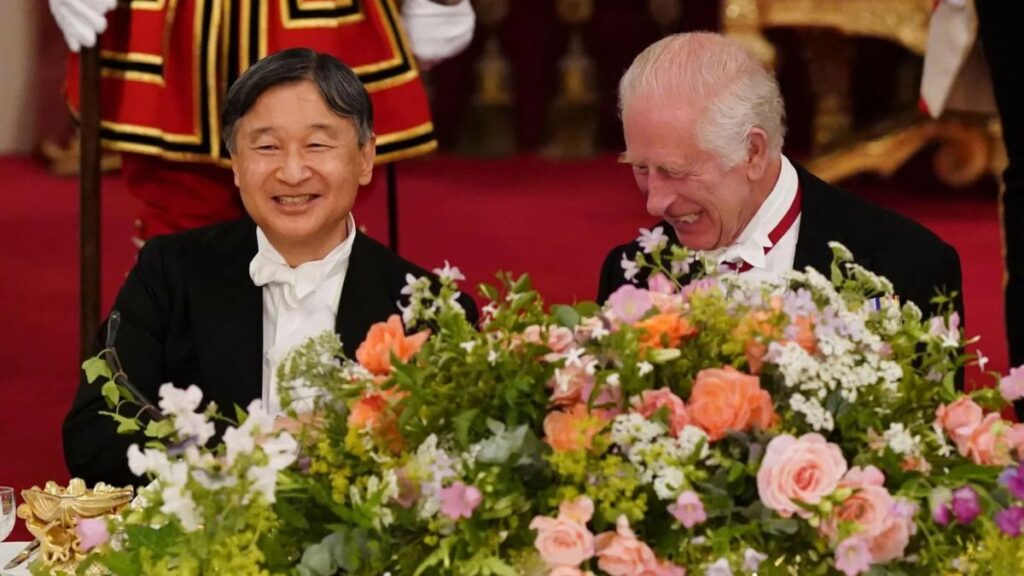
King Charles wished Hello Kitty a happy birthday during the Japanese Emperor’s state visit
Still, “it would be a lie if I said there was no pushback” from other managers and employees in the company, Mr Tsuji says.
He also says he clashed with his grandfather over how to run the company.
“But one day I realised that I was being arrogant, trying to convince someone 60 years senior,” he says.
“After about a year, my grandfather told me to run the company as I see fit – that he will leave it up to me.”
The new boss’s revamp of the business has been paying off so far.
Within two years of the younger Tsuji becoming chief executive, Sanrio was profitable again, in what analyst Mr Yoshioka calls “a beautiful V-shaped recovery”.
Its share price has risen tenfold since 2020 and the company now has a stock market valuation of more than a trillion yen ($6.5bn; £5bn).

Hello Kitty is no longer the most popular Sanrio character
Away from the boardroom and stock market, there was also an intriguing incident earlier this year.
While Hello Kitty’s true identity is relatively well-known in Japan, some overseas fans were shocked by comments from a Sanrio executive in July.
Speaking on US television, retail business development director Jill Koch told viewers that “Hello Kitty is not a cat” and is in fact a British schoolgirl.
Her comments sparked a flurry of social media posts, with fans expressing their shock and confusion about the revelation.
“Hello Kitty is Hello Kitty and she can be whoever you want her to be – she can be your sister, your mother, it can be another you,” Mr Tsuji says.
Pushed on whether he has any idea why his grandfather decided not to make her Japanese, Mr Tsuji concludes: “London is an amazing city and it was the envy of many Japanese girls, so that may be one of the reasons they decided that she’s from London.”
It may not be the definitive answer her fans are looking for – but after all, Hello Kitty was created 14 years before the younger Tsuji was even born. Half a century since her creation, it is possible that the beloved character’s origin story will continue to be shrouded in mystery for years to come.
– Mariko Oi
(BBC News)
FEATURES
Dog-sized dinosaur that ran around feet of giants discovered
Published
14 hours agoon
June 25, 2025By
editor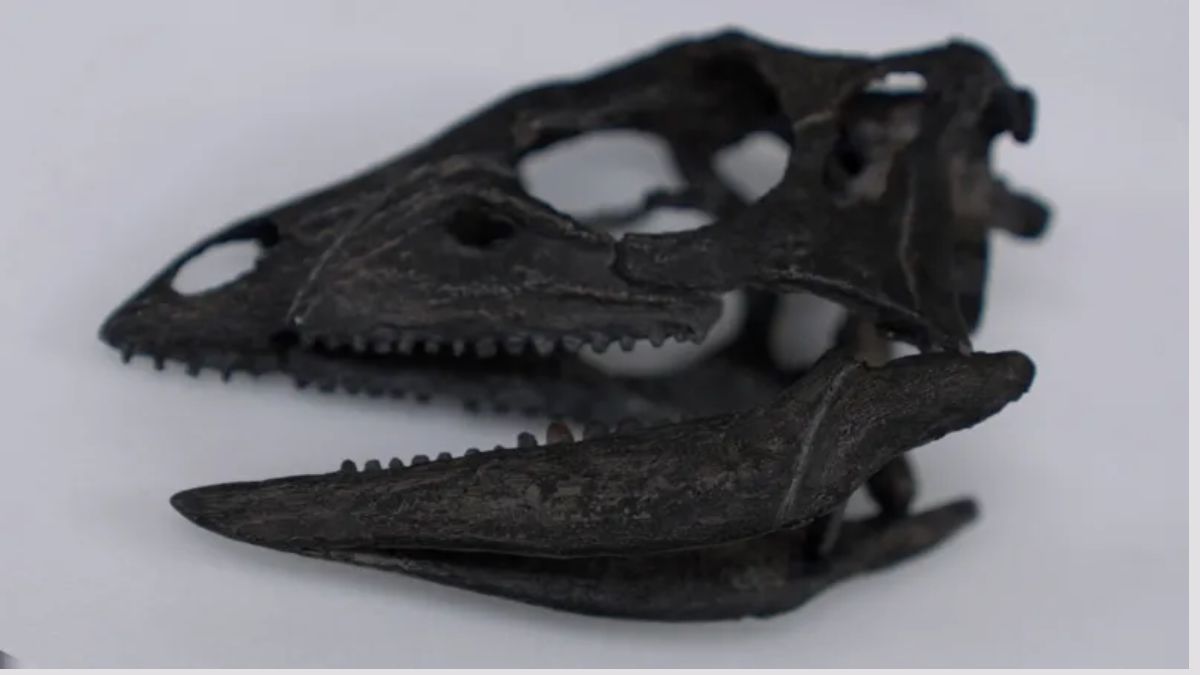
The full name of the new species is Enigmacursor mollyborthwickae dinosaur
A labrador-sized dinosaur was wrongly categorised when it was found and is actually a new species, scientists have discovered.
Its new name is Enigmacursor – meaning puzzling runner – and it lived about 150 million years ago, running around the feet of famous giants like the Stegosaurus.
It was originally classified as a Nanosaurus but scientists now conclude it is a different animal.
On Thursday it will become the first new dinosaur to go on display at the Natural History Museum (NHM) in London since 2014.
BBC News went behind the scenes to see the dinosaur before it will be revealed to the public.
The discovery promises to shed light on the evolutionary history that saw early small dinosaurs become very large and “bizarre” animals, according to Professor Paul Barrett, a palaeontologist at the museum.
When we visit, the designer of a special glass display case for the Enigmacursor is making last-minute checks.
The dinosaur’s new home is a balcony in the museum’s impressive Earth Hall. Below it is Steph the Stegosaurus who also lived in the Morrison Formation in the Western United States.
Enigmacursor is tiny by comparison. At 64 cm tall and 180 cm long it is about the height of a labrador, but with much bigger feet and a tail that was “probably longer than the rest of the dinosaur,” says Professor Susanna Maidment.

The Enigmacursor was a small dinosaur that lived alongside some of the biggest known
“It also had a relatively small head, so it was probably not the brightest,” she adds, adding that it was probably a teenager when it died.
With the fossilised remains of its bones in their hands, conservators Lu Allington-Jones and Kieran Miles expertly assemble the skeleton on to a metal frame.
“I don’t want to damage it at this stage before its revealed to everybody,” says Ms Allington-Jones, head of conservation.

Conservators Lu Allington-Jones and Kieran Miles assembled the dinosaur onto a frame for display
“Here you can see the solid dense hips showing you it was a fast-running dinosaur. But the front arms are much smaller and off the ground – perhaps it used them to shovel plants in its mouth with hands,” says Mr Miles.
It was clues in the bones that led scientists at NHM to conclude the creature was a new species.
“When we’re trying to identify if something is a new species, we’re looking for small differences with all of the other closely-related dinosaurs. The leg bones are really important in this one,” says Prof Maidment, holding the right hind limb of the Enigmacursor.
When the dinosaur was donated to the museum it was named Nanosaurus, like many other small dinosaurs named since the 1870s.
But the scientists suspected that categorisation was false.
To find out more, they travelled to the United States with scans of the skeleton and detailed photographs to see the original Nanosaurus that is considered the archtype specimen.
“But it didn’t have any bones. It’s just a rock with some impressions of bone in it. It could be any number of dinosaurs,” Professor Maidment said.

Susanna Maidment travelled to the US to look at the original Nanosaurus dinosaur
In contrast, the NHM’s specimen was a sophisticated and near-to-complete skeleton with unique features including its leg bones.
Untangling this mystery around the names and categorisation is essential, the palaeontologists say.
“It’s absolutely foundational to our work to understand how many species we actually have. If we’ve got that wrong, everything else falls apart,” says Prof Maidment.
The scientists have now formally erased the whole category of Nanosaurus.
They believe that other small dinosaur specimens from this period are probably also distinct species.
The discovery should help the scientists understand the diversity of dinosaurs in the Late Jurassic period.
Smaller dinosaurs are “very close to the origins of the large groups of dinosaurs that become much more prominent later on,” says Prof Barrett.
“Specimens like this help fill in some of those gaps in our knowledge, showing us how those changes occur gradually over time,” he adds.
Looking at these early creatures helps them identify “the pressures that finally led to the evolution of their more bizarre, gigantic descendants,” says Prof Barrett.

The fossilised remains are the most complete of any in the world for early small dinosaurs
The scientists are excited to have such a rare complete skeleton of a small dinosaur.
Traditionally, big dinosaur bones have been the biggest prize, so there has been less interest in digging out smaller fossils.
“When you’re looking for those very big dinosaurs, sometimes it’s easy to overlook the smaller ones living alongside them. But now I hope people will keep their eyes close to the ground looking for these little ones,” says Prof Barrett.
The findings about Enigmacursor mollyborthwickae are published in the journal Royal Society Open Science.
– Georgina Rannard
Science correspondent
(BBC News)
FEATURES
JVP-NPP should learn difference between “marine research” & “surveillance”
Published
5 days agoon
June 21, 2025By
editor

There’s now an apparent stand-off between the UN FAO and the Foreign Affairs Minister Vijitha Herath on the request made by the FAO to have permission for the UN flagged “Dr. Fridtjof Nansen” marine research vessel to enter Sri Lankan waters. Minister Herath is on record saying the request would have to wait till the Committee on Standard Operating Procedures (SOP) for foreign research vessels appointed by him and perhaps chaired by him too, complete their task in formulating the SOP. It was revealed, the SOP Committee is yet to be convened for the first time. With “Dr. Fridtjof Nansen” marine research vessel waiting in Mauritius to set sail to Sri Lanka, numerous discussions the UN had with the Foreign Ministry (FM) since April has only reached the point, where the SL FM agreed to allow the ship to pick Bangladeshi “Scientists” from Colombo, but not get involved in any research in our waters.
res (SOP) for foreign research vessels appointed by him and perhaps chaired by him too, complete their task in formulating the SOP. It was revealed, the SOP Committee is yet to be convened for the first time. With “Dr. Fridtjof Nansen” marine research vessel waiting in Mauritius to set sail to Sri Lanka, numerous discussions the UN had with the Foreign Ministry (FM) since April has only reached the point, where the SL FM agreed to allow the ship to pick Bangladeshi “Scientists” from Colombo, but not get involved in any research in our waters.
What’s this whole calamity over a FAO marine research ship requesting permission to enter Sri Lankan waters? Someone somewhere at the helm of the Foreign Ministry, or the Foreign Minister himself has wholly misinterpreted the issue of country owned research ships visiting Sri Lanka and the moratorium that was imposed by President Wickramasinghe barring foreign research ships.
Sri Lanka was pressured by India and the US to curtail if not stop Chinese research ships from docking in our ports in the past few years. Special concerns were over the 02 research ships “Yuan Wang 5” that docked at Hambantota in early 2022 during Gotabhaya’s presidency and “Shi Yan 6” in October 2023 at the Colombo port during Wickramasinghe’s presidency. It was said, these 02 research ships had the capacity for surveillance and monitoring the region. Under pressure especially from New Delhi, President Wickramasinghe decided to impose a one year moratorium on foreign research ships visiting Sri Lanka, effective from early January 2024.

The Wickramasinghe moratorium came to its end on 05 January 2025, as the JVP-NPP government did not extend it further. Reason to allow the moratorium to lapse in January, may have been on a strictly confidential agreement reached to have a separate bi-lateral agreement on defence, during President Anura Kumara’s maiden official visit to India in mid-December 2024. Defence had been an issue discussed with Indian authorities during President Anura Kumara’s Indian visit, wrote Dr. Samatha Mallempati of “Indian Council of World Affairs” in May 2025. A defence MoU would thus make the moratorium irrelevant thereafter. PM Modi was to visit Sri Lanka 04 months later in early April this year. One among the many MoUs the 02 governments signed during PM Modi’s visit was the first ever Memorandum of Understanding (MoU) on “defence co-operation”.
India began working on a defence strategy for Indian Ocean Region (IOR) since the conclusion of Sri Lanka’s North-East civil war in 2009. New Delhi was very much concerned over President Rajapaksa’s post-war association with not only China, but with Pakistan too. Both with long time hostile border disputes with India. Contributing an article to “Stimson.org” on Pakistan-Sri Lanka relations in March 2021, two researchers on South & East Asian geo-politics Riaz Khokhar and Asma Khalid wrote, “In 2016, Pakistan signed a defense agreement with Sri Lanka to provide Colombo with eight JF-17 fighter aircrafts. Pakistani and Sri Lankan armies and naval forces have also regularly interacted through port calls, military and naval training and exercises, and defense workshops and seminars. In the recent high-level visit to Colombo, the Pakistani premier offered a USD $50 million credit line to Sri Lanka to further enhance defense and security partnerships.”
South Asian geo-politics did have new developments with post-war Sri Lanka compromising its economic needs with defence and national security in challenging the Tamil Diaspora canvassed US-Euro resolutions at UNHRC Sessions. Rajapaksa government was required to accept independent international investigations on war crimes and crimes against humanity, with many top military officers named. Pakistan stood with Sri Lanka, voting against all such resolutions at every UNHRC Session, while the Rajapaksa regime joined the Belt and Road Initiative of China, and was financially supported by China. Financial support that led to the popular adage “Sri Lankan type Chinese debt trap”.

India has since been working towards establishing its dominance in the IOR keeping Sri Lanka as its focal point. Highlighting the geo-political importance of Sri Lanka, Dr. Samatha Mallempati wrote, “Since the region accounts for fifty percent of world maritime trade and seventy percent of global trade in oil and gas, there is a greater need to safeguard the sea lanes of communication. The increasing strategic significance of island states in the region therefore assumed importance. The island states such as Sri Lanka is looking to play a much bigger role by leveraging their geographical location.”
The perception in New Delhi that Sri Lanka is leveraging its geographical location to define geo-politics in the IOR, was what paved for the MoU on defence co-operation India signed with Sri Lanka, that for 05 years would provide India adequate space to influence Sri Lankan geo-politics in its favour. But the fact is, all these agreements and treaties are about IOR peace and stability and the influence “foreign countries” may have in it. The Sri Lankan moratorium was also about research ships of foreign countries, docking in our ports.
How would the UN flagged marine research ship “Dr. Fridtjof Nansen” interfere in IOR stability and peace? The request to FAO for marine research in our waters had gone from the SL Government, never mind who led the government. FAO is focussed on sustainable fisheries management and this modern, fully equipped ship for marine research is used mainly in African and Indian Ocean waters in collaboration with NORAD to support developing countries with research based fisheries management. That perhaps was the only reason for the previous government to request the FAO to visit Sri Lankan waters. Mind you, that request for FAO to undertake marine research in our waters, went out while the moratorium on foreign research ships was fully effective.
Whatever the bureaucracy at the FM says, a seasoned politician like Vijitha Herath who had been in parliament for 25 years to date from year 2000, should know the difference between this UN flagged marine research ship and other research ships owned by individual countries. Anything flagged as “UN” is common property of 195 sovereign nation States who are UN members. This ignorance therefore very clearly exhibits the JVP/NPP leadership as the most intellectually timid leadership to have been voted to power since 1948 independence.
Kusal Perera
20 June, 2025
FEATURES
Adorable or just weird? How Labubu dolls conquered the world
Published
6 days agoon
June 20, 2025By
editor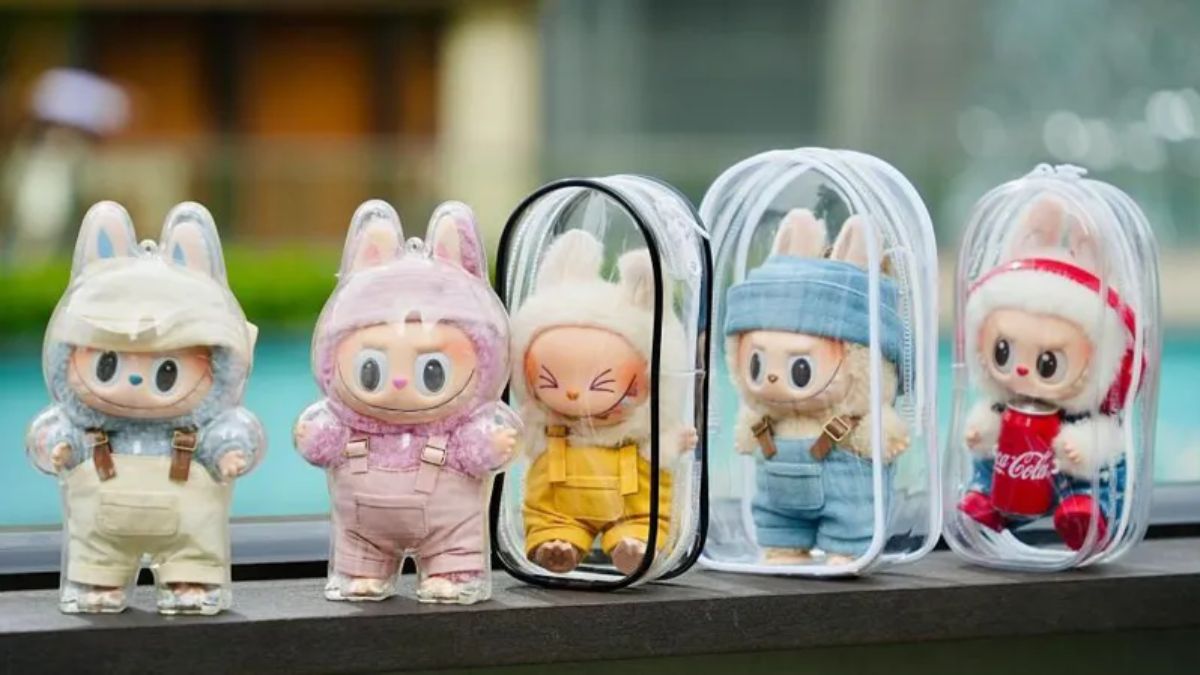
Whether you reckon they are cute, ugly or just plain weird, chances are you have heard of the furry dolls that have become a global sensation – Labubu.
Born a monster, the elf-like creature from Chinese toy maker Pop Mart is now a viral purchase. And it has no dearth of celebrity advocates: Rihanna, Dua Lipa, Kim Kardashian and Blackpink’s Lisa. Ordinary folk are just as obsessed – from Shanghai to London, the long queues to snap up the doll have made headlines, sometimes descending into fights even.
“You get such a sense of achievement when you are able to get it among such fierce competition,” says avowed fan Fiona Zhang.
The world’s fascination with Labubu has almost tripled Pop Mart’s profits in the past year – and, according to some, even energised Chinese soft power, which has been bruised by the pandemic and a strained relationship with the West.
So, how did we get here?
What exactly is Labubu?
It’s a question that still bothers many – and even those who know the answer are not entirely sure they can explain the craze.
Labubu is both a fictional character and a brand. The word itself doesn’t mean anything. It’s the name of a character in “The Monsters” toy series created by Hong Kong-born artist Kasing Lung.
The vinyl faces are attached to plush bodies, and come with a signature look – pointy ears, big eyes and a mischievous grin showing exactly nine teeth. A curious yet divided internet can’t seem to decide if they are adorable or bizarre.

The Labubu universe includes other characters that have inspired their own dolls
According to its retailer’s official website, Labubu is “kind-hearted and always wants to help, but often accidentally achieves the opposite”.
The Labubu dolls have appeared in several series of “The Monsters”, such as “Big into Energy”, “Have a Seat”, “Exciting Macaron” and “Fall in Wild”.
The Labubu brand also has other characters from its universe, which have inspired their own popular dolls – such as the tribe’s leader Zimomo, her boyfriend Tycoco and her friend Mokoko.
To the untrained eye, some of these dolls are hard to distinguish from one another. The connoisseurs would know but Labubu’s fame has certainly rubbed off, with other specimens in the family also flying off the shelves.
Who sells Labubu?
A major part of Pop Mart’s sales were so-called blind boxes – where customers only found out what they had bought when they opened the package – for some years when they tied up with Kasing Lung for the rights to Labubu.
That was 2019, nearly a decade after entrepreneur Wang Ning opened Pop Mart as a variety store, similar to a pound shop, in Beijing. When the blind boxes became a success, Pop Mart launched the first series in 2016, selling Molly dolls – child-like figurines created by Hong Kong artist Kenny Wong.

Pop Mart first opened as a variety store in Beijing in 2010
But it was the Labubu sales that fuelled Pop Mart’s growth and in December 2020, it began selling shares on the Hong Kong Stock Exchange. Those shares have soared by more than 500% in the last year.
Pop Mart itself has now become a major retailer. It operates more than 2,000 vending machines, or “roboshops”, around the world. And you can now buy Labubu dolls in stores, physical or virtual, in more than 30 countries, from the US and UK to Australia and Singapore, although many of them have recently paused sales due to overwhelming demand. Sales from outside mainland China contributed to nearly 40% of its total revenue in 2024.
In a sign of just how popular Labubus have become, Chinese customs officials said this week that they had seized more than 70,000 fake dolls in recent days.
The demand did not rise overnight though. It actually took a few years for the elfin monsters to break into the mainstream.
How did Labubu go global?
Before the world discovered Labubu, their fame was limited to China. They started to become a hit just as the country emerged from the pandemic in late 2022, according to Ashley Dudarenok, founder of China-focused research firm ChoZan.
“Post-pandemic, a lot of people in China felt that they wanted to emotionally escape… and Labubu was a very charming but chaotic character,” she says. “It embodied that anti-perfectionism.”
The Chinese internet, which is huge and competitive, produces plenty of viral trends that don’t go global. But this one did and its popularity quickly spread to neighbouring South East Asia.
Fiona, who lives in Canada, says she first heard about Labubu from Filipino friends in 2023. That’s when she started buying them – she says she finds them cute, but their increasing popularity is a major draw: “The more popular it gets the more I want it.
“My husband doesn’t understand why me, someone in their 30s, would be so fixated on something like this, like caring about which colour to get.”

Labubu pendants are the most coveted
It helps that it’s also affordable, she adds. Although surging demand has pushed up prices on the second-hand market, Fiona says the original price, which ranged from 25 Canadian dollars ($18; £14) to 70 Canadian dollars for most Labubu dolls, was “acceptable” to most people she knows.
“That’s pretty much how much a bag accessory would cost anyway these days, most people would be able to afford it,” she says.
Labubu’s popularity soared in April 2024, when Thai-born K-pop superstar Lisa began posting photos on Instagram with various Labubu dolls. And then, other global celebrities turned the dolls into an international phenomenon this year.
Singer Rihanna was photographed with a Labubu toy clipped to her Louis Vuitton bag in February. Influencer Kim Kardashian shared her collection of 10 Labubu dolls with her Instagram following in April. And in May, former England football captain Sir David Beckham also took to Instagram with a photo of a Labubu, given to him by his daughter.
Now the dolls feel ubiquitous, regularly spotted not just online but also on friends, colleagues or passers-by.
What’s behind the Labubu obsession?
Put simply, we don’t know. Like most viral trends, Labubu’s appeal is hard to explain – the result of timing, taste and the randomness that is the internet.
Beijing is certainly happy with the outcome. State news agency Xinhua says Labubu “shows the appeal of Chinese creativity, quality and culture in a language the world can understand”, while giving everyone the chance to see “cool China”.
Xinhua has other examples that show “Chinese cultural IP is going global”: the video game Black Myth: Wukong and the hit animated film Nezha.

A Pop Mart store in Shanghai
Some analysts seem surprised that Chinese companies – from EV makers and AI developers to retailers – are so successful despite Western unease over Beijing’s ambitions.
“BYD, DeepSeek, all of these companies have one very interesting thing in common, including Labubu,” Chris Pereira, founder and chief executive of consultancy firm iMpact, told BBC News.
“They’re so good that no one cares they’re from China. You can’t ignore them.”
Meanwhile, Labubu continue to rack up social media followers with millions watching new owners unbox their prized purchase. One of the most popular videos, posted in December, shows curious US airport security staff huddling around a traveller’s unopened Labubu box to figure out which doll is inside.
That element of surprise is a big part of the appeal, says Desmond Tan, a longtime collector, as he walks around a Pop Mart store in Singapore vigorously shaking blind boxes before deciding which one to buy. This is a common sight in Pop Mart.
Desmond collects “chaser” characters, special editions from Pop Mart’s various toy series, which include Labubu. On average, Desmond says, he finds a chaser in one out of every 10 boxes he buys. It’s a good strike rate, he claims, compared to the typical odds: one in 100.
“Being able to get the chaser from shaking the box, learning how to feel the difference…,” is deeply satisfying for him.
“If I can get it in just one or two tries, I’m very happy!”
– Fan Wang, Adam Hancock
(BBC News)

NTC approves 2.5% reduction in bus fares (Update)

2025 A/L exam dates announced



